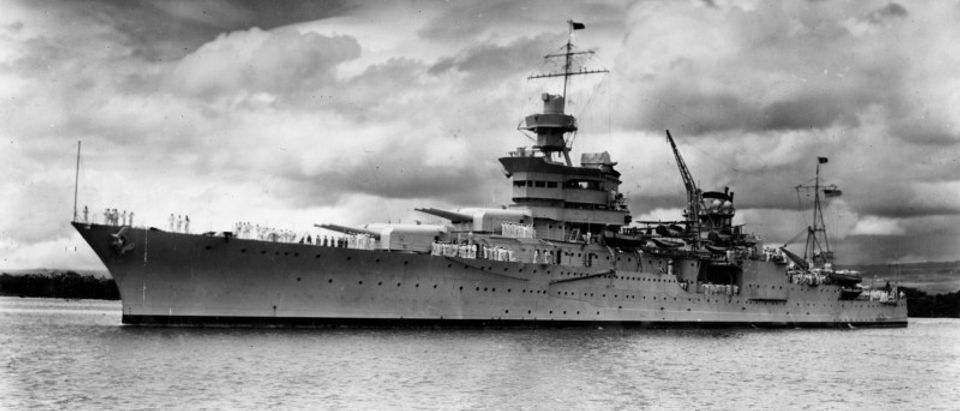On Dec. 7, 1941, the Empire of Japan bombed the U.S. Pacific Fleet which was stationed in Pearl Harbor on the Hawaiian island of Oahu. In addressing Congress the next day, President Roosevelt called it “a date which will live in infamy.”
But Roosevelt’s reputation should live in infamy too. The line that Roosevelt enthusiasts and left-wing historians have peddled for so many years is that the attack was a complete surprise.
Here’s a sample from The American Pageant, a typical left-wing American history textbook widely used in American high schools:
Officials in Washington, having “cracked” the top-secret code of the Japanese, knew that Tokyo’s decision was for war … Roosevelt, misled by Japanese ship movements in the Far East, evidently expected the blow to fall on British Malaya or on the Philippines. No one in high authority in Washington seems to have believed that the Japanese were either strong enough or foolhardy enough to strike Hawaii.
That’s the left’s version, and it’s in line with the rest of the “fake history” they want American high school students to learn. The Education and Research Institute (ERI — of which I am chairman) has written a critique of The American Pageant, which tells a more accurate story about Pearl Harbor and scores of other events in American history.
The American Pageant gives almost no blame to FDR for the Pearl Harbor disaster — even though the United States had broken the Japanese secret code and knew an attack was imminent. The textbook authors assure us that “no one in high authority in Washington seems to have believed that the Japanese” had the ability to launch such an attack.
But that is simply wrong. Some high-ranking members of the U.S. Navy did believe a surprise attack at Pearl Harbor was possible, but FDR disagreed with them and he removed those contrary voices from positions of power.
The commander of the U.S. Pacific Fleet in Pearl Harbor was Admiral J. O. (Joe) Richardson. Unlike Roosevelt, Richardson did not underestimate the Japanese — and he had studied them and the dangerous Pearl Harbor location thoroughly.
Richardson said that a simulated aerial attack that the U.S. had conducted at Pearl Harbor in 1932 proved that torpedo planes could cripple any fleet stationed there.
Even before Roosevelt ordered the Pacific Fleet to stay at Pearl Harbor indefinitely, Richardson had protested that keeping the fleet there posed a danger to every ship. He had been attempting to monitor the military movements of the Japanese to give the United States time to evacuate Pearl Harbor in case of danger.
Richardson, after writing many letters warning of danger at Pearl Harbor, was ordered to Washington to meet with the president. At the meeting, Richardson strongly recommended moving the Pacific Fleet back to San Francisco immediately.
When Roosevelt dismissed his concerns, the frustrated Richardson said, “Mr. President, I feel that I must tell you that the senior officers of the Navy do not have the trust and confidence in the civilian leadership of this country that is essential for the successful prosecution of a war in the Pacific.”
FDR replied, “Joe, you just don’t understand that this is an election year [1940] and there are certain things that can’t be done, no matter what, until the election is over and won.”
Then, when the election was over and FDR re-elected to his third term, he fired Richardson from command of the Pacific Fleet and installed a lackey, Admiral Kimmel, to take his place. Kimmel agreed with FDR that Pearl Harbor was safe.
But of course it wasn’t safe, and actions Roosevelt took before and after the election made it even less safe. In January of 1940 Roosevelt had terminated the United States — Japan trade treaty. In July of 1940 he had restricted exports to Japan. In September of 1940 he had sent $25 million to the Chinese resistance against Japanese incursions, and he had also embargoed shipments of scrap iron to Japan. In July of 1941, Roosevelt had frozen all Japanese assets in the United States and expanded the embargo.
The official State Department history concludes: “Faced with serious shortages as a result of the embargo, unable to retreat, and convinced that the U.S. officials opposed further negotiations, Japan’s leaders came to the conclusion that they had to act swiftly.” That seems to have been what Roosevelt wanted.
On Monday, Nov. 24, 1941, only 13 days before the Pearl Harbor attack, Henry L. Stimson, Roosevelt’s secretary of War, recorded in his diary a meeting with Roosevelt:
He brought up the event that we were likely to be attacked perhaps (as soon as) next Monday [December 1], for the Japanese are notorious for making an attack without warning, and the question was what we should do. The question was how we should maneuver them into the position of firing the first shot without allowing too much danger to ourselves.
On Nov. 25, Secretary of State Cordell Hull demanded that Japan withdraw from China. The following day Hull wrote this: “The matter is now in the hands of the Army and the Navy.”
Days later, on Dec. 7, 1941, the Japanese attacked: 2,403 people died, eight battleships were sunk or damaged, and 188 airplanes were destroyed.
The United States took a long time to recover.
But FDR escaped blame. Today we should remember that it’s not just Dec. 7, 1941, that should live in infamy, but Roosevelt’s reputation as well.
Daniel Oliver is chairman of the board of the Education and Research Institute and a director of the Pacific Research Institute for Public Policy in San Francisco. In addition to serving as chairman of the Federal Trade Commission under President Reagan, he was executive editor and subsequently chairman of the board of William F. Buckley Jr.’s National Review.
The views and opinions expressed in this commentary are those of the author and do not reflect the official position of The Daily Caller.


